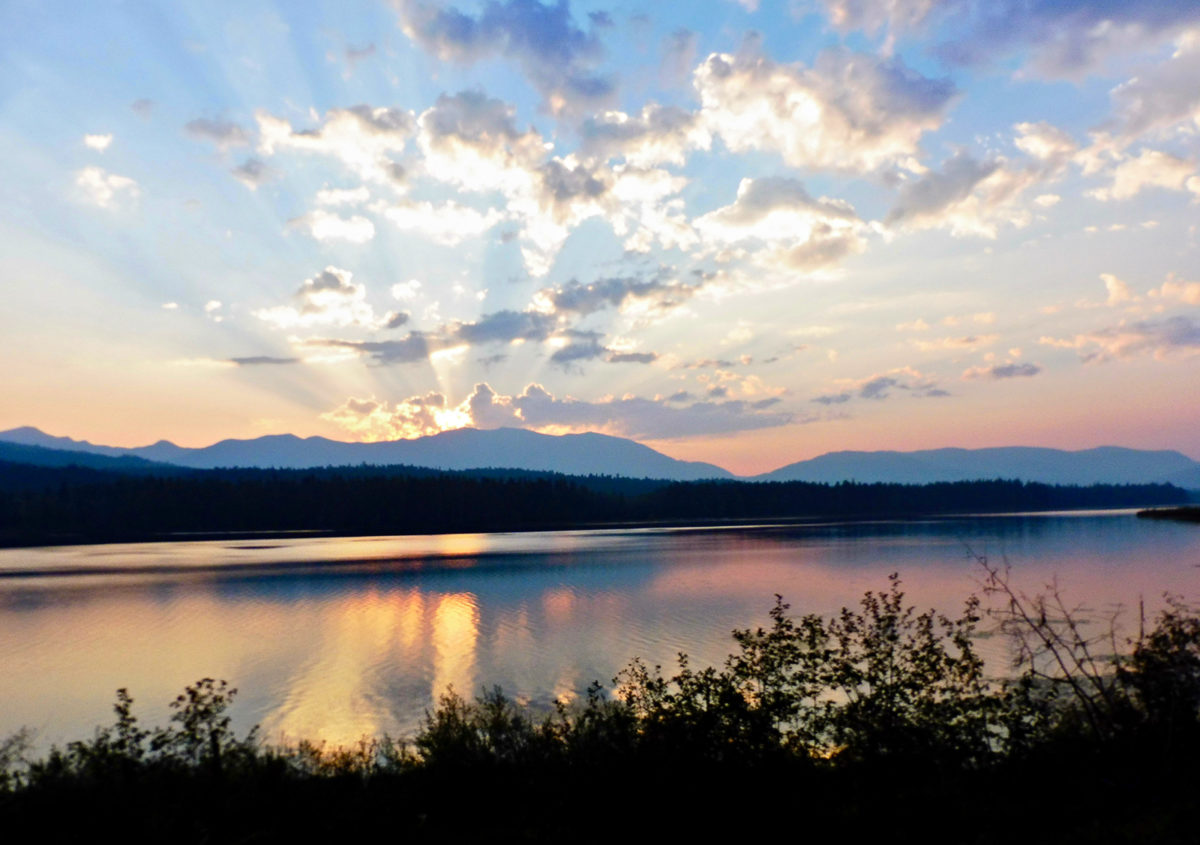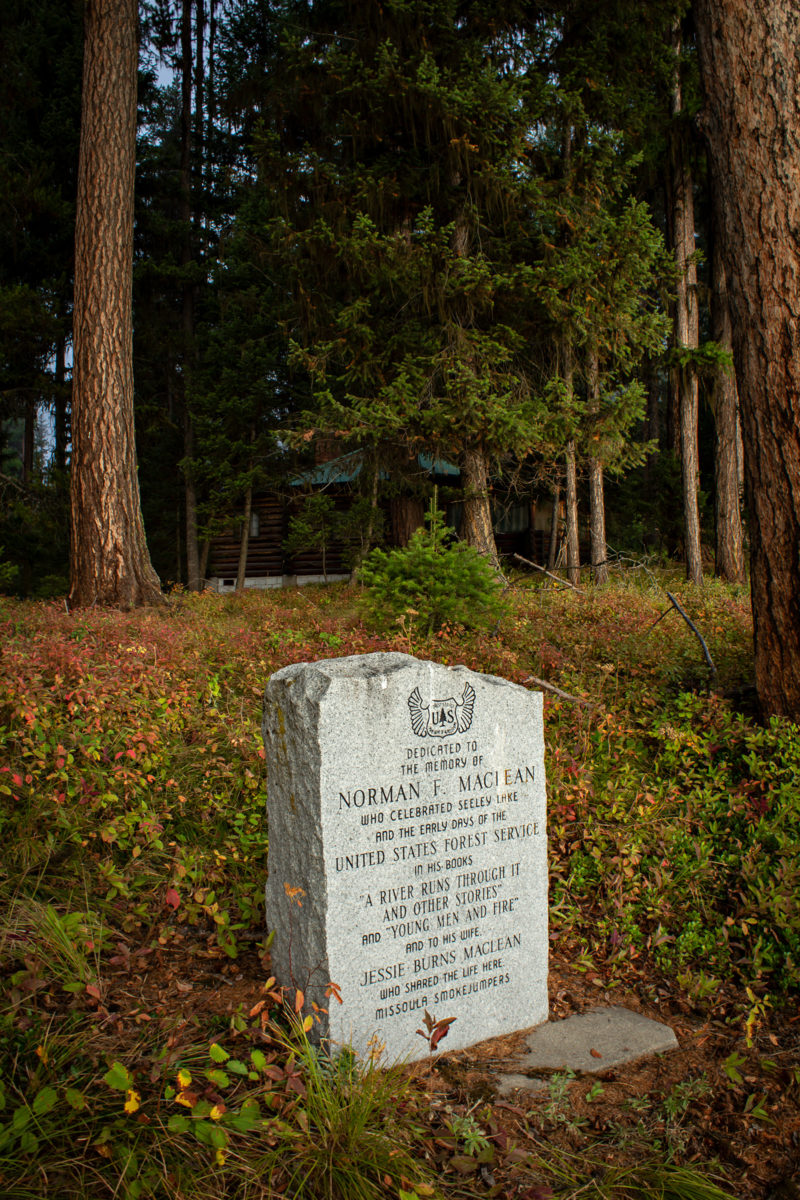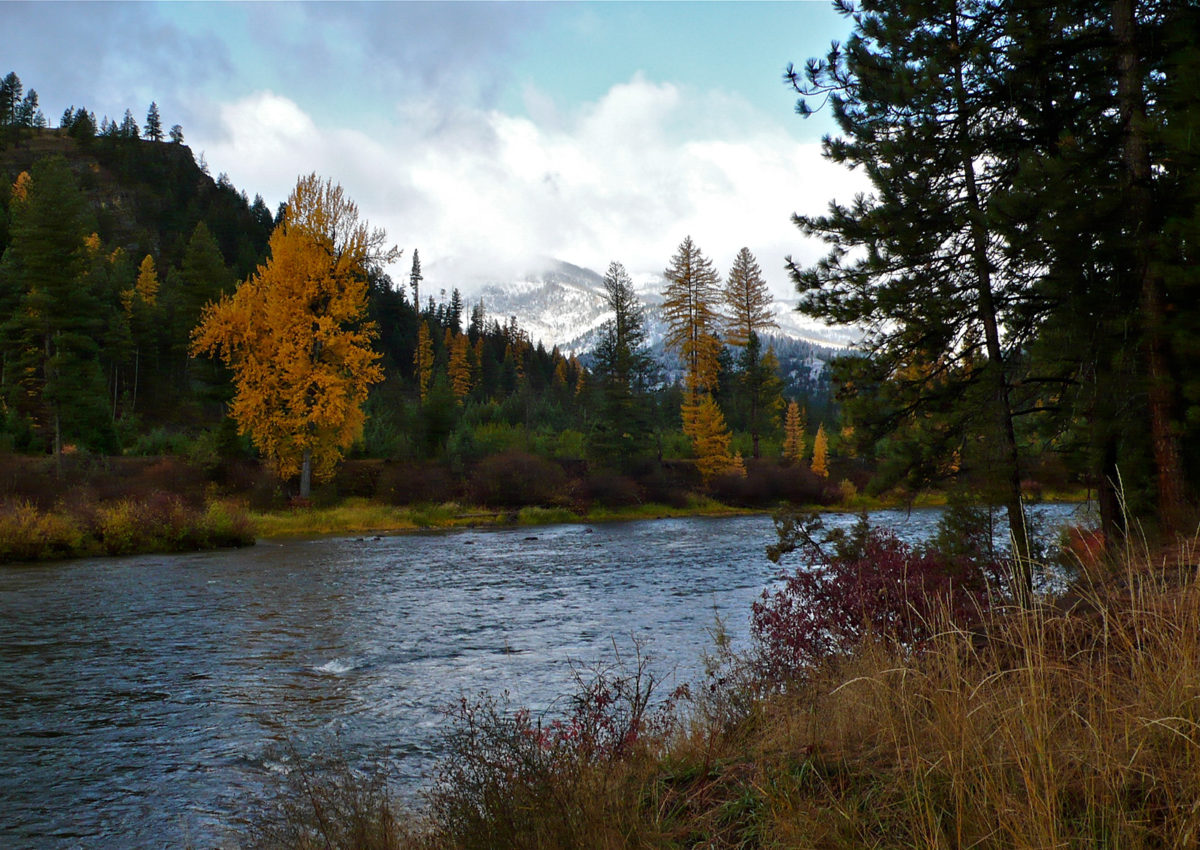A son belonging to American literature’s most notable fly-fishing family — the Macleans of “A River Runs Through It” fame — John N. Maclean was 7 years old when his father, Norman, took him on his first fishing trip. With a lunch packed by his mother, his father drove him to a feeder creek near their family cabin, built along the forested shores of Seeley Lake in 1922 by his grandfather, the Rev. John Maclean. The story of how he caught his first fish, a six-inch rainbow trout, before a short burst of hail erupted out of the clear summer skies is recounted in the first chapter of Maclean’s recent book, “Home Waters: A Chronicle of Family and a River.”
Many more fish would be caught over his lifetime, but that first fish caught with a wet fly, guided by his father’s instructions and excitement, is what placed him in the ongoing epic of a family closely tied to Montana’s Big Blackfoot River. As he wrote in “Home Waters,” fishing was much more than the catch: “We fish as a way to communicate with each other, living and dead. We fish to keep a present hold on Montana and to recall the frontier Eden it once was. We fish because it’s the family legacy, a demanding craft handed down from one generation to the next.”
Another legacy and demanding craft, handed down from one generation to the next is writing “Home Waters” is Maclean’s sixth book. His first five deal with the story of fatal wildfires which became his second career after he resigned from a 30-year career as a journalist. The Maclean cabin, without indoor plumbing and a compact footprint now looks quite quaint against more modern, sizable cabins ringing the lake, speedboats on trailers parked beneath the giant Western larch trees. The cabin serves Maclean much like it did his father as a place to write.
“Cabins have a special place,” Maclean told me as we sat across each other in wooden chairs, a fire crackling to keep warm on a rainy, cold June day. Snow tops the mountains, barely visible through the low-lying fog.
Beyond a place that he and his sister, Jean, called home, driving each summer from Chicago after his father completed his semester teaching at the University of Chicago, the cabin serves as his personal field research station. The small wood table nestled against the logs of the cabin’s frame, perched beneath a paned glass window has been used by father and son, alike.
The bulk of Maclean’s journalism career was spent in Washington D.C. writing for the Chicago Tribune as the diplomatic correspondent. His career in journalism included serving as a regular on the “Kissinger Shuttle,” filing stories on the many trips abroad of Secretary State Henry Kissinger. Maclean left the news business and drove west to investigate the 1994 South Canyon Fire on Storm King Mountain in Colorado. Writing about fatal wildfires in the American West would not only bring him physically back to the western United States, a place that felt like home, but also carried echoes of his father’s second book, “Young Men and Fire,” published posthumously two years after Norman’s death in 1990. Along with his sister, Maclean was responsible for the unfinished manuscript to reach publication.
At 52, Maclean began the second phase of his writing career with an intense focus on understanding and unraveling the details that made fighting fire deadly like the one that claimed 14 lives on Storm King Mountain. The result was “Fire on the Mountain,” his first look into the terrain of wildland fire and the men and women that fight them. Published in 1999, it became a bestseller and won the Mountains and Plains Booksellers award for best non-fiction that year. Four more books devoted to wildland fires followed, and he has used the lakeside cabin to conduct his exhaustive research, typically involving several years of work.
“If I hadn’t had this place I don’t know how I could have done the books,” he said.
However, not all the books are written in their entirety along the shores of Seeley Lake. After conducting his research, he would return to his home in Washington D.C. to begin writing. The separation between mountains and the east and west Coast was integral to his writing process. “I was no longer plugged into the west. I could take the materials that I had collected out here and shape them with a freedom that I would not have had if I’d stayed here,” he said.
For him, there were certain challenges in the cabin if he tried to write all of his books there. “I think you need two places to work. The fieldwork is one thing, then the creativity part of it, pulling it together, is another. You better not have everyone around you who’s in there, tugging on you. Not literally, but figuratively.”

This method of the family cabin as the field research station and the writing occurring at his home back east was a constant in writing the acclaimed non-fiction accounts of American wildfires with “Fire and Ashes,” “The Thirtymile Fire,” “The Esperanza Fire,” and “River of Fire” and, more recently the chronicle of his family, “Home Waters.”
The tug could be many things, including his father’s celebrity status as a writer arriving late in life, and the comparisons between them: both wrote about fire and fishing. Yet, as we sat facing each other with the rain lessening its beat against the old logs that his grandfather had sawn and placed himself, he acknowledged the challenges of writing in a similar vein. For “Home Waters,” he explained, “I should have been terrified when I started writing it because it was going to be compared to ‘A River Runs Through It.’ But I’d already been through that with ‘Young Men and Fire’ and ‘Fire on the Mountain.’ It was not always pleasant. I got criticized and attacked; I got praised.”
For Sara Brown, the program manager for the Fire, Fuels, and Smoke Science program with the U.S. Forest Service Rocky Mountain Research Station, Maclean’s ownership of his father’s legacy in writing about fire is not only impressive but has contributed significantly to the public’s understanding of wildfire and the approach to firefighting culture.
“You know he could have shied away from being the son of a famous author, or he could have just owned it. It has continued on with him [Maclean] and it’s a cool legacy. Together, he and his dad have captured a pretty good snapshot of these fatality fires over time and describe some of the changes that we’ve seen over time in fire culture,” Brown said.

The impact of “Fire on the Mountain” went beyond awards and accolades from the writing and publishing industry and directly touched those like Joe Harris, now the deputy director of accident reviews for Innovation and Organizational Learning with RMRS. Harris’ role is to review accidents on wildland fires and he is appreciative of Maclean’s outside perspective.
“He’s never been a firefighter. He’s never done the job,” Harris said. “But he does this for a living where he looks at other people doing this job, and tries to figure out what there is to learn. Looking at [fire accidents] from the perspective of a journalist helps us out so that’s why I like to read his books.”
Members of the wildland fire community like Brown and Harris aren’t the only two who are deeply impacted by Maclean’s work. “Home Waters” struck a deep chord with Kim Briggeman, a reporter for the Missoulian for 30 years. Briggeman, who grew up near the confluence of the Blackfoot and Clark Fork rivers, has long been a fan of the works of both Macleans. In 2009 he met Maclean at a monument dedication ceremony to his grandfather, the Rev. John Maclean, at the First Presbyterian Church in Missoula. That first meeting developed into more throughout the years, with Briggeman visiting the family cabin at Seeley Lake and writing about it for the Missoulian. As someone deeply interested in the history of the Blackfoot River region, Briggeman shares his appreciation for “Home Waters” and how Maclean dove into Native American history and the grave impact that Meriwether Lewis and his small party as the first white men to travel through the Blackfoot Valley. For Briggeman, the chapter highlighted his relationship to the area, both its past and present.
“To me, the river’s always changing but always the same. The mountains and meadows that flank it are sources of endless fascination and exploration,” he said.
Much of “Home Waters” chronicles the Maclean family, providing fans of “A River Runs Through It” with critical details of its beloved characters like Maclean’s uncle Paul and the true story of his murder in Chicago. Robert Redford’s 1992 film adaption of the book portrayed the death much differently. The book also delves deeper into the broader swaths of history of a place that defined the author’s life, and because of chapters like “The River of the Road to the Buffalo” the book has now inspired statewide educational and cultural projects. “Home Waters: Primary Sources and the Places of Montana” is fiscally sponsored by the Library of Congress and the Museums Association of Montana with the goal of creating partnerships between museum staff and public-school educators to support the use of placed-based educational programs. “Home Waters” is used to emphasize the role of primary sources and literature in classroom and museum settings. Cheryl Hughes used to teach “A River Runs Through It” in her high school classrooms in Missoula and now serves as an educational consultant, assisting with the “Home Waters: Primary Sources and the Places of Montana” project. She feels that “Home Waters” is the ideal text for students to learn about place-based literature. As a fourth-generation Montanan, she also is a longtime fan of both of the Macleans’ work but reserves a particular affiliation for what Maclean achieved in the book.

“I can put myself in those places because I’ve traveled to all of them,” she said. “In so many ways I experienced a time in Montana like that in the book – it’s kind of my story, too.”
Although he’s the teller of stories – they are about the men and women who perished in forest fires or his father’s writing – it doesn’t mean that the stories come easily to him. As the morning drifts into the afternoon, he shares that writing about that first fishing experience with his father took a quarter of a century to accomplish. Many drafts of that story ended up in the very fireplace that’s heating the small cabin, he said. But when he finally sat down to write “Home Waters,” he was finally able to write about the most important story of his life. “This was a very important story to me. It’s the genesis of all fishing, and the happiest day I ever spent with my dad. I wanted to get it right. What if I’d gotten it wrong?”
In reflecting upon the challenges in shaping that long-ago experience of setting up his fly rod and casting toward a riffle, he shares his long-honed approach to writing. “There is a time to refrain from writing a story, especially one that is very, very close to you. And there is a time when it is appropriate to do it, when the triggers are right and when it’s going to come out of you right. If you try to force it you can really mess things up,” he said.
It may have taken Maclean 25 years before he was able to describe that day on the creek, but he was able to finally land the story upon the page, offering another tale that shows a generational pull to a river that has called to him ever since.
What both Maclean and his father Norman accomplished in their volumes of works is capturing that often undefinable power that place has, and as Briggeman puts it: “The Blackfoot is about heart. And though they used different approaches, the Macleans have gotten to the heart of it.”
Credit: Source link































